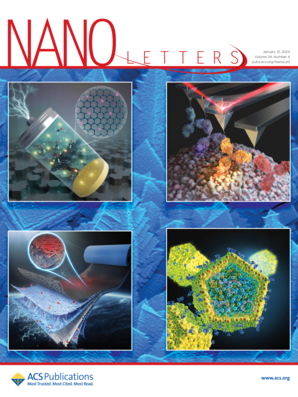Ultrahigh-Q Quasi-BICs via Precision-Controlled Asymmetry in Dielectric Metasurfaces
IF 9.6
1区 材料科学
Q1 CHEMISTRY, MULTIDISCIPLINARY
引用次数: 0
Abstract
Achieving ultrahigh quality factor optical resonances is crucial for advancing low-threshold lasers, high-sensitivity sensors, and nonlinear photonics. While dielectric metasurfaces supporting quasi-bound states in the continuum (qBICs) show great potential, their experimental realization has been challenging due to the difficulty of precisely controlling symmetry-breaking at the nanoscale. Here, we introduce a precision-controlled symmetry-protected qBIC method using angular perturbations to precisely tune asymmetry, ensuring both high precision and reproducibility of Q-factors. In contrast to traditional SP-qBIC excitation, which relies on uncontrolled asymmetry, our method offers more accurate and consistent control by precisely tuning angular perturbations instead of structural variations. Additionally, our approach defines the lower limit of achievable Q-factors, providing a reliable lower bound. The experimental demonstration of SP-qBICs in composite nanoslit metasurfaces achieves a record-breaking Q-factor of 1.1 × 105-the highest reported for SP-qBICs to date. These findings offer a promising platform for designing ultrahigh-Q resonators for next-generation photonic-applications.

求助全文
约1分钟内获得全文
求助全文
来源期刊

Nano Letters
工程技术-材料科学:综合
CiteScore
16.80
自引率
2.80%
发文量
1182
审稿时长
1.4 months
期刊介绍:
Nano Letters serves as a dynamic platform for promptly disseminating original results in fundamental, applied, and emerging research across all facets of nanoscience and nanotechnology. A pivotal criterion for inclusion within Nano Letters is the convergence of at least two different areas or disciplines, ensuring a rich interdisciplinary scope. The journal is dedicated to fostering exploration in diverse areas, including:
- Experimental and theoretical findings on physical, chemical, and biological phenomena at the nanoscale
- Synthesis, characterization, and processing of organic, inorganic, polymer, and hybrid nanomaterials through physical, chemical, and biological methodologies
- Modeling and simulation of synthetic, assembly, and interaction processes
- Realization of integrated nanostructures and nano-engineered devices exhibiting advanced performance
- Applications of nanoscale materials in living and environmental systems
Nano Letters is committed to advancing and showcasing groundbreaking research that intersects various domains, fostering innovation and collaboration in the ever-evolving field of nanoscience and nanotechnology.
 求助内容:
求助内容: 应助结果提醒方式:
应助结果提醒方式:


